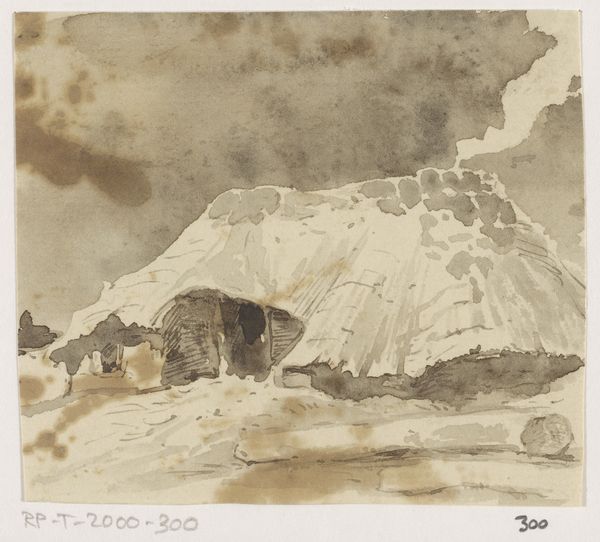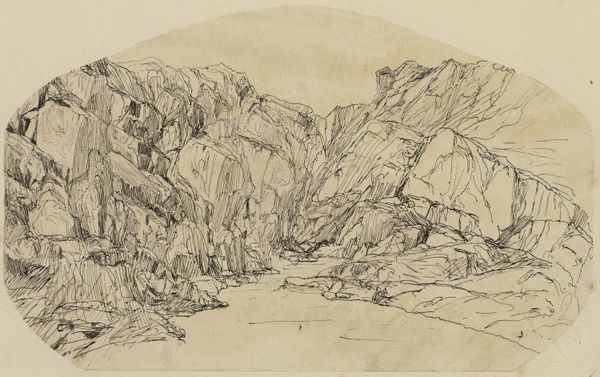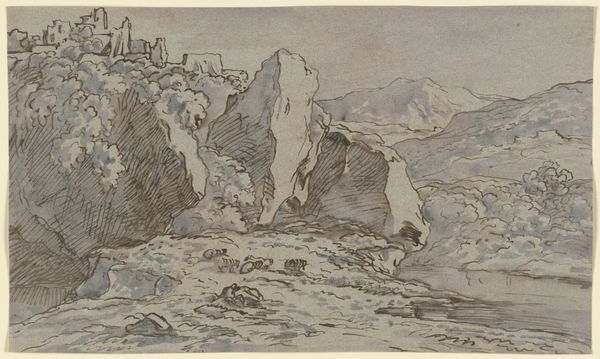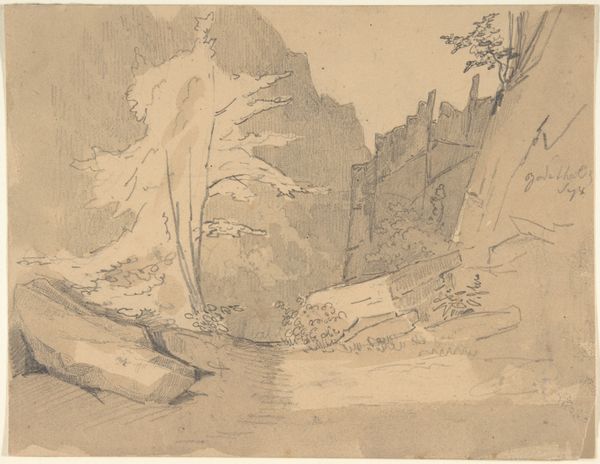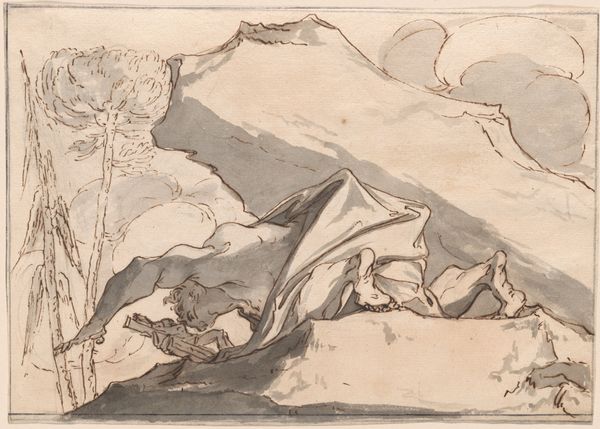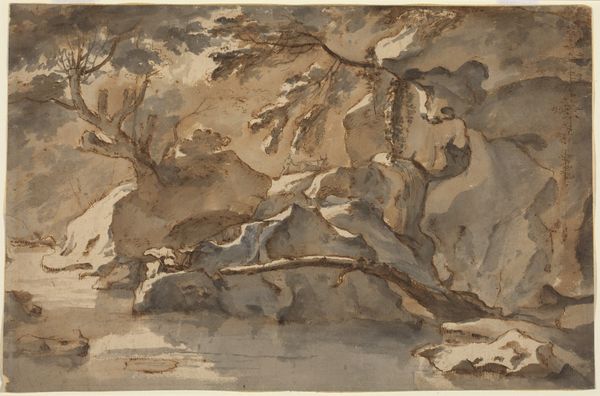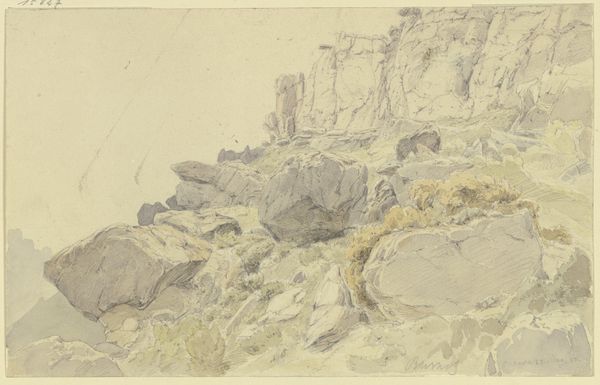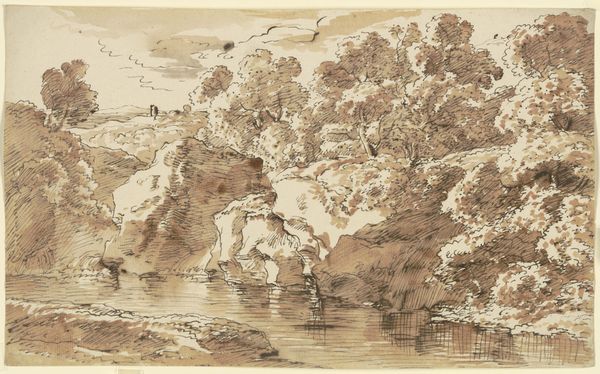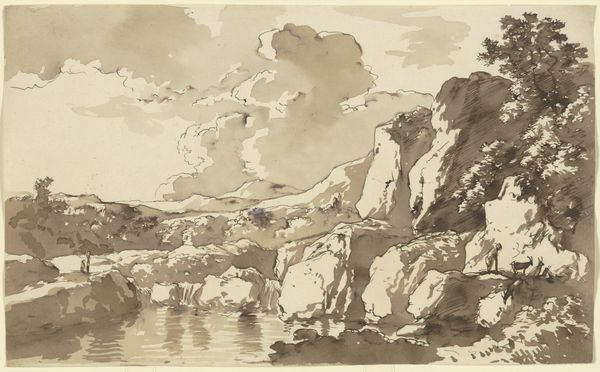
Dimensions: 136 mm (height) x 213 mm (width) (bladmaal)
Curator: Immediately, there's a sort of serene melancholy that washes over me when I look at this landscape. Editor: Yes, there’s something deeply peaceful about this Italian vista. We’re looking at “Italiensk landskab” by Jens Petersen Lund, created sometime between 1730 and 1793. The work, rendered in watercolor and possibly created *en plein air*, resides here at the SMK. Curator: The watercolor medium gives it such lightness, wouldn’t you agree? The way the washes create depth—a dreamlike quality almost. But what strikes me are the contrasting forms, those almost vertical trees punctuating the horizon line. Editor: They certainly draw the eye upward. Lund was deeply embedded in academic art circles. Think about how the picturesque influenced artists of that period, striving to capture nature in an idealized form that also communicated a specific social standing, or level of sophistication through a European Grand Tour. Curator: It’s there for sure! Note the architectural elements suggested in the mid-ground – hinting perhaps at classical ruins? This recalls the layers of history and cultural memory so embedded in the landscape genre. And what do you make of the artist’s use of line, almost wiry in places? Editor: Ah, the line quality speaks of romanticism's nascent stages – a move away from strict representational accuracy towards the expression of individual feeling. Watercolors were having a moment; and I note Lund handles them confidently, the forms are carefully placed so the drawing feels resolved. Curator: The very sparseness contributes to that peaceful melancholia I felt. I'm so accustomed to viewing finished canvases – seeing this artist’s technique, it feels so immediate, as if stepping into his mind! Editor: Agreed. And by displaying works like these, we illuminate not only artistic process, but also a culture’s evolving relationship to nature, representation, and place. The layering of symbolism allows for multiple perspectives.
Comments
No comments
Be the first to comment and join the conversation on the ultimate creative platform.
